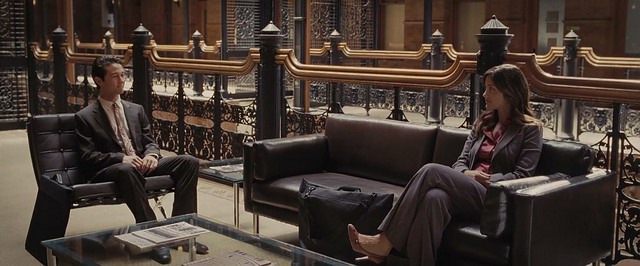
Though most moviegoers will have seen a lot of Bradbury Building, they may not recognize it as a landmark of Los Angeles architecture – unless, of course, they’ve seen Thom Andersen’s documentary “Los Angeles Plays Itself,” which devotes a solid block of its nearly three-hour runtime to the many roles it has played onscreen. “The movies discovered the Bradbury Building before the architectural historians did,” says its narrator. “The earliest appearance I know came in 1943: in ‘China Girl,’ it played the Hotel Royale in Mandalay, Burma. The following year, in ‘The White Cliffs of Dover,’ it played a London military hospital overflowing with wounded soldiers.”
Later films placed the Bradbury Building elsewhere: “Caprice” in Paris, “Wolf” in New York, “Murder in the First” in San Francisco. These and other roles may demonstrate the structure’s versatility, but they’ve surely also caused some confusion as to its actual location. Anyone seeking to satisfy an interest in Los Angeles architecture, though, will hear about the Bradbury Building’s place in its canon before they hear about anything else. It found that place thanks, in large part, to its celebration by influential Southern California architectural historian and Arts & Architecture Magazine contributor Esther McCoy, who launched her campaign in 1953, a decade after the building made its cinematic debut in “China Girl” and six decades after it first opened.
“There is nothing whatever accidental about it,” goes the quote from the magazine proudly included, for a time, on a handout provided to the Bradbury’s visitors. “There are no afterthoughts. It is a forever young building, out of a youthful and vigorous imagination. But it has left nothing to chance. Stairways leap into space because of endless calculations. The skylight is a fairy tale of mathematics.” This praise, like almost all the praise heaped upon the building ever since, focuses on its interior. When observers mention the exterior at all, they do so only do dismiss it: David Gebhard and Robert Winter’s “Architectural Guidebook to Los Angeles” describes its style as “mildly Romanesque,” but only in a parenthetical aside after they’ve first pronounced it “dull.”
Read the whole thing at KCET.